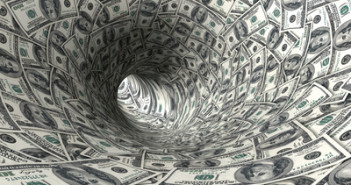Talks in Washington regarding a resolution to the “fiscal cliff” will probably dominate the news throughout December. As discussed in the November outlook, Obama’s victory in the race for the White House, coupled with a Republican house, is not that positive for a resolution of the cliff.
In the immediate aftermath of the elections, both sides released optimistic comments that gave the impression that a solution could be found for the biggest issue: tax hikes. At one point, it seemed that the White House was willing to accept the closure of loopholes rather than tax hikes. At another point, it seemed that Republicans were ready to enable tax hikes.
* This article is part of the December monthly forex report. You can download the full report by joining the newsletter in the form below.
However, the smiles faded away relatively fast, and it seems that Democrats and Republicans are playing the “blame game” once again, passing the ball to the other side’s court and also saying that a failure to reach a resolution would be “owned” by the other side.
So what will happen with the cliff?
Many market participants see the cliff as already having a negative impact on the US economy: the uncertainty regarding taxes, investment and other laws deters companies from making decisions. This uncertainty will end somehow.
Here are 4 scenarios:
- A last minute medium term solution: This is the most likely outcome, if we learn from recent history. Eventually, the parties will reach some agreement that will enable each side to declare victory – some kind of compromise that will not provide long term solutions, but will still provide clear policy for 2013. The expected market reaction will be a relief rally, albeit limited. Such a deal could trigger another credit rating downgrade, and this could aid the US dollar.
- An early solution: If both sides manage to resolve the tax issues, the road to resolving everything else should be easy and politicians will hurry to their vacations. While going on vacation should not be ignored as a factor, this scenario is unlikely, as the politicians tend to make decisions only in the last minute, and the last minute is 23:59 on December 31st. Also in such an optimistic scenario, the long term impact depends on the quality of the deal: long term or medium term only. In case of a limited early deal, the US dollar will fall on a risk rally, and could strengthen again only after the holidays.
- A comprehensive deal: Similar to the early solution scenario, chances are low for a convincing deal for the long term. Nevertheless, this is also an option. If politicians get really serious, we could actually see a better tone from rating agencies, no more downgrades and a stock market rally. In this case, the dollar will fall at first on a risk rally, but rise after a few months.
- The US Falls Off the Cliff: This is supposed to be the worst case scenario, but it isn’t necessarily so. While there are better chances for a last minute solution, a prolonged stalemate could result in missing the deadline. In this case, markets are expected to fall on the failure to reach an agreement, but the actual outcome for the US economy might not be so bad. Missing the deadline could actually result in some more serious thinking about the impact of the changes that the fiscal cliff includes on the economy. After an immediate surge of the dollar on risk aversion, the reaction could change thanks to an intervention by Ben Bernanke: more money printing, en masse, in order to “do something”, could change the fate of the US dollar and send it down.
What do you think will happen with the cliff?
